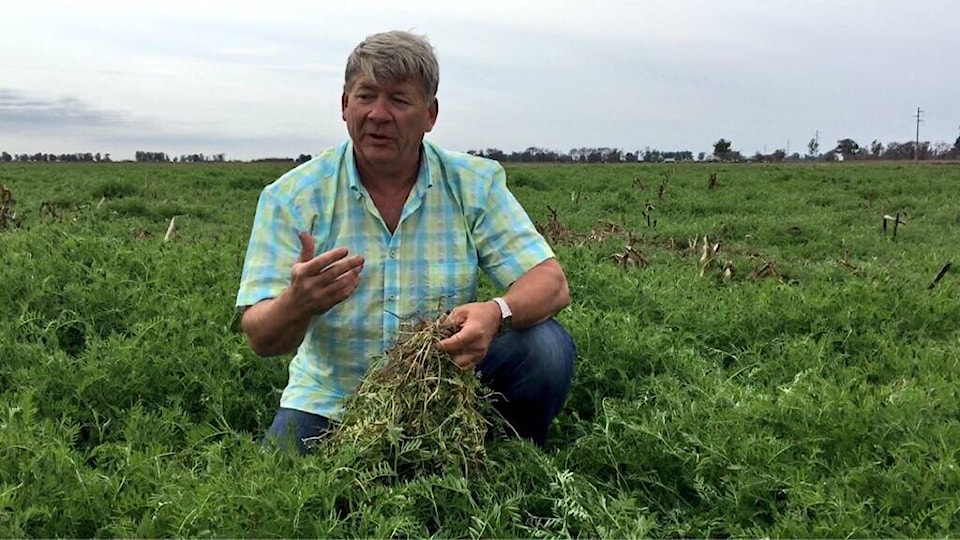Over the past few months, a technology called CHAT GPT has been making the headlines. I have been watching with interest wondering what impact this technology will have on the agriculture.
Even if you are not interested in agriculture per say, this article has relevance as the technology has personal implications to you in other fields such as medicine.
First, let’s start with the basics. CHAT GPT is a language model developed by OpenAI. GPT stands for Generative Pre-trained Transformer and CHAT is well … about chatting, which it is pretty good at doing.
The question I am pondering is how can CHAT GPT help farmers, agronomists, animal technicians, and technology specialists make better decisions?
My work as a Professional Agrologist is a combination of art and science. You see, agriculture is seldom black and white and many factors come to play that make each farming situation quite unique. This is why I am on a mission to build an ecosystem for agriculture called AGvisorPRO. AGvisorPRO is a technology platform which connects those seeking advice with trusted experts who can provide answers in all areas of agriculture from cropping to precision agriculture to regenerative farming practices to grain marketing strategies to insurance decisions to animal nutrition to human resource management to questions about chemistry, biology, physics, economics and mental health…you get it…all of agriculture…globally.
So, it is not surprising that many are telling me that “Saik, you’re out to lunch. CHAT GPT is going to obliterate what you are building at AGvisorPRO. CHAT GPT is going to put human advice out of business.” To that I say, “WHOA, hold on minute. I don’t think the human “touch” in agriculture is going out of fashion any time soon…but it’s going to change.
We have been testing AI as an Agri-Bot in the background of AGvisorPRO comparing the CHAT GPT technology to human experts as they address issues posted on our platform and the result is … “meh” … not that great and certainly not something I, as a farmer would depend on. And the reason is “nuance”.
You see, agriculture is nuanced, and farming is complex because there are so many disconnected yet relevant data points that need to be considered. For example, how market prices are tied to a weather forecast can influence a fungicide decision. These are all factors’ farmers/agronomists consider when making the decision to spend another $20/ac.
But do I believe AI’s such as CHAT GPT have a role to play in agriculture? The answer is yes.
However, unlike most references to AI as “Artificial” Intelligence I prefer to think of it more as “AUGMENTED” Intelligence. I believe that we can harness the power of AI to “augment” the work of the professional enabling that expert human mind to focus on creative solutions rather that gathering vast amounts of background data.
For example, if a farmer were to ask me how best to apply phosphate fertilizer. I have to ask many questions to learn about the pH, organic matter, rainfall patterns, type of crop, rotation, yield target, growing degree days, calcium-aluminum-iron levels, type of planter or seeder, seedbed utilization, type of fertilizer available in the area, placement, salt index, foliar options, is the land owned or rented, has manure been applied or is manure available, what’s the latest research on phosphate response to crops grown in this soil and climate…and…and…and.
Could an AI pull together part of all the background information I need? I think so. This would significantly “augment” my brain and give me more confidence in the solution I am providing to the farmer about the type, rate, placement and timing of his phosphate fertilizer.
Some of the examples of how an AI could augment agriculturalists would be; animal technicians using CHAT GPT to monitor animal health and behavior. By analyzing data from sensors and cameras, CHAT GPT can detect patterns that may indicate an animal is sick or stressed, allowing technicians to intervene before the animal’s health deteriorates. Or equipment specialists benefiting from CHAT GPT by using it to analyze data from various sources, such as equipment sensors and maintenance logs, to identify potential problems before they occur. This can save time and money by reducing equipment downtime and repair costs.
In conclusion, CHAT GPT is a powerful tool that can help enhance the work of farmers, agronomists, animal technicians, and precision technology specialists in agriculture. However, it’s important to remember that AI is more appropriately referred to as “Augmented” Intelligence in agriculture, as it is meant to assist and enhance human decision-making rather than replace it.
Agriculture is ultimately a relationship-driven industry where professionals need to have the background data, but at the end of the day, it’s also about people making decisions that affect families. So, let’s use CHAT GPT to make better decisions and improve our communities, but let’s also remember that humans are at the heart of agriculture.
(And yes, I did use CHAT GPT to “AUGMENT” the writing of this piece)
Robert Saik is a professional agrologist and certified agriculture consultant. He is an author of FOOD 5.0 and The Agriculture Manifesto and CEO, of AGvisorPRO an app that connects those seeking agriculture advice with experts who provide answers. You can reach Rob by downloading and connecting to him on AGvisorPRO.
